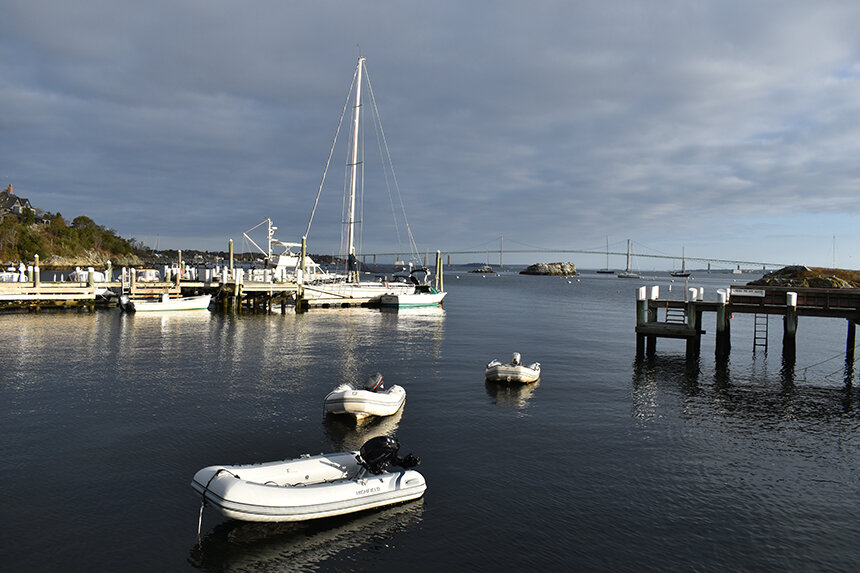Coastal Council Denies Petition for Man-Made Matunuck
April 25, 2012
SOUTH KINGSTOWN, R.I. — This may come as a surprise to few, but Matunuck Beach is not man-made. At least that was the Coastal Resources Management Council’s (CRMC) decision regarding the town’s petition to reclassify the beach as such.
In a 6-2 vote against reclassification, with one council member absent, the CRMC closed its April 24 meeting at South Kingstown High School, but there were some interesting developments in the language used concerning Matunuck Beach by all of the involved parties.
To begin the meeting, assistant town solicitor Andrew Tietz asked Steven Alfred, the town’s 35-year manager, to offer testimony in support of the beach reclassification.
Alfred said that most past assents issued for hardened beach structures to prevent erosion on Matunuck beach are justification for reclassification, claiming that “1,000 of the 1,400 feet in question have already been armored by property owners along the beach.”
“The natural shoreline features are no longer dominant” and “the CRMC staff report supports reclassification,” he said — albeit with a list of 11 stipulations. Alfred admitted that some of the armoring operations by property owners hadn’t been permitted by CRMC.
CRMC member Tony Affigne took exception to this argument, calling it “Kafkaesque that reinforcements that weren’t permitted are now being used as justification for further reinforcements.” Tietz argued that these reinforcements were, in fact, legal due to their existence prior to the formation of the CRMC. He also argued that when the CRMC was formed in 1972 the beach had been improperly classified as a headlands bluff.
Lawyers S. Paul Ryan and Tricia Jedele, representing Save The Bay and the Conservation Law Foundation, respectively, argued against reclassification. Ryan suggested that reclassification amounted to “the spot zoning of a coastal area.” Jedele questioned whether the council even had the authority to reclassify the beach, and posited that if the beach were reclassified it may open the door to wholesale armoring by beachfront property owners.
Legal counsel for the Rhode Island chapter of the Surfrider Foundation, Brian Wagner argued that this proposal was simply designed as “an end-run around CRMC regulations,” and given that the town has known of the erosion problem at Matunuck Beach for more than two decades that “those seeking reclassification aren’t here due to a false classification. They are here because they failed to take action.”
Wagner added that during his time as an environmental enforcement attorney for the state, “If an individual or group that had repeatedly ignored regulations, then approached me to change those regulations, I’d have been insulted, and frankly, the council should be insulted.”
Surprisingly, some of the legal representatives for Matunuck home and business owners that spoke fervently against the town’s proposal to erect a sheet-pile wall to protect Matunuck Beach Road spoke in favor of reclassifying the beach as man-made.
William Landry, representing the owners of Ocean Mist and Tara’s Tavern, said his clients supported the reclassification, because “it would allow a flexible approach to saving the beach that would be beneficial to all parties.” “Nourishment should be our first approach. It is common and successful in many other places, and is considerably less expensive than building a seawall or other hard solutions,” he added.
Don Packer, who represents a number of homeowners in the Mary Carpenter Beach area, expressed his clients’ continued support for the previously proposed sheet-pile wall as well as the reclassification of the beach as man-made.
During public comment, an interesting point was made by Jim Bedel of the Rhode Island Shoreline Access Coalition. “The erection of a seawall, or other hard solutions to the erosion problem, will inevitably restrict Rhode Islanders’ constitutional right to lateral access to the beach,” he said. “When the ocean laps against a wall or other hard structure, how does a citizen exercise that right?”
Throughout the hearing, positions of the interested parties seemed to shift nearly as quickly as the sand on Matunuck Beach. By the end of the session, there seemed to be some agreement between the town, CRMC and the private property owners that the beach itself must be saved, and in order to do this, the parties must work together to come up with a solution that rebuilds the beach while using minimal hardening structures.
Just prior to casting his nay vote, Affigne said, “You cannot convince me that Matunuck Beach is like the [obviously man-made] waterfront off of Allens Avenue in Providence. I will not vote for an open-ended reclassification. I will vote for whatever hybrid plan that the parties come up with.”
Categories
Join the Discussion
View CommentsYour support keeps our reporters on the environmental beat.
Reader support is at the core of our nonprofit news model. Together, we can keep the environment in the headlines.
We use cookies to improve your experience and deliver personalized content. View Cookie Settings



